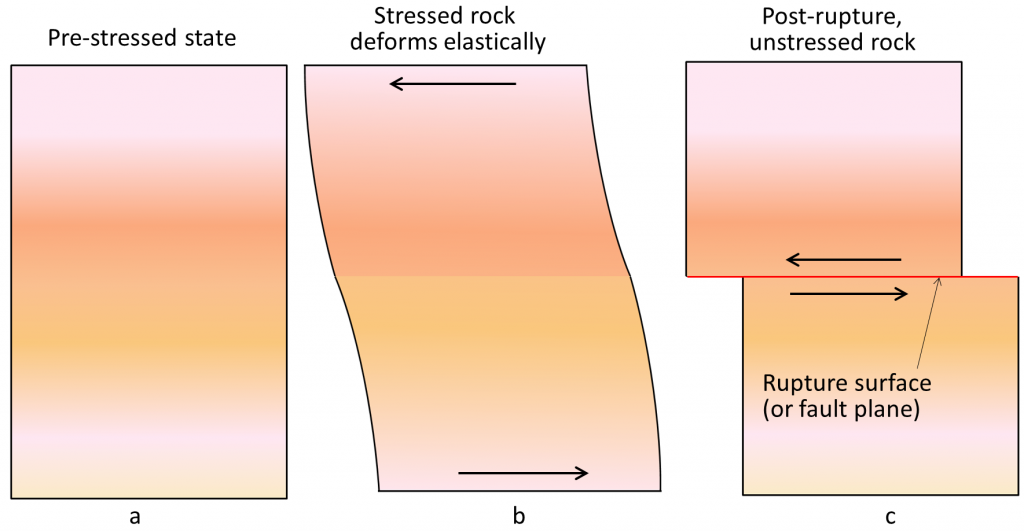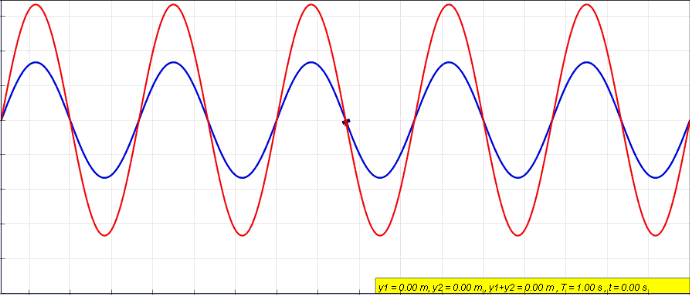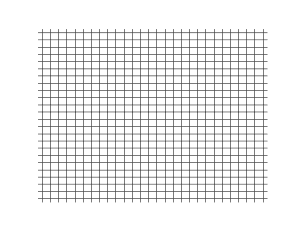9.6: Earthquake Essentials
- Page ID
- 6900
\( \newcommand{\vecs}[1]{\overset { \scriptstyle \rightharpoonup} {\mathbf{#1}} } \)
\( \newcommand{\vecd}[1]{\overset{-\!-\!\rightharpoonup}{\vphantom{a}\smash {#1}}} \)
\( \newcommand{\id}{\mathrm{id}}\) \( \newcommand{\Span}{\mathrm{span}}\)
( \newcommand{\kernel}{\mathrm{null}\,}\) \( \newcommand{\range}{\mathrm{range}\,}\)
\( \newcommand{\RealPart}{\mathrm{Re}}\) \( \newcommand{\ImaginaryPart}{\mathrm{Im}}\)
\( \newcommand{\Argument}{\mathrm{Arg}}\) \( \newcommand{\norm}[1]{\| #1 \|}\)
\( \newcommand{\inner}[2]{\langle #1, #2 \rangle}\)
\( \newcommand{\Span}{\mathrm{span}}\)
\( \newcommand{\id}{\mathrm{id}}\)
\( \newcommand{\Span}{\mathrm{span}}\)
\( \newcommand{\kernel}{\mathrm{null}\,}\)
\( \newcommand{\range}{\mathrm{range}\,}\)
\( \newcommand{\RealPart}{\mathrm{Re}}\)
\( \newcommand{\ImaginaryPart}{\mathrm{Im}}\)
\( \newcommand{\Argument}{\mathrm{Arg}}\)
\( \newcommand{\norm}[1]{\| #1 \|}\)
\( \newcommand{\inner}[2]{\langle #1, #2 \rangle}\)
\( \newcommand{\Span}{\mathrm{span}}\) \( \newcommand{\AA}{\unicode[.8,0]{x212B}}\)
\( \newcommand{\vectorA}[1]{\vec{#1}} % arrow\)
\( \newcommand{\vectorAt}[1]{\vec{\text{#1}}} % arrow\)
\( \newcommand{\vectorB}[1]{\overset { \scriptstyle \rightharpoonup} {\mathbf{#1}} } \)
\( \newcommand{\vectorC}[1]{\textbf{#1}} \)
\( \newcommand{\vectorD}[1]{\overrightarrow{#1}} \)
\( \newcommand{\vectorDt}[1]{\overrightarrow{\text{#1}}} \)
\( \newcommand{\vectE}[1]{\overset{-\!-\!\rightharpoonup}{\vphantom{a}\smash{\mathbf {#1}}}} \)
\( \newcommand{\vecs}[1]{\overset { \scriptstyle \rightharpoonup} {\mathbf{#1}} } \)
\( \newcommand{\vecd}[1]{\overset{-\!-\!\rightharpoonup}{\vphantom{a}\smash {#1}}} \)
\(\newcommand{\avec}{\mathbf a}\) \(\newcommand{\bvec}{\mathbf b}\) \(\newcommand{\cvec}{\mathbf c}\) \(\newcommand{\dvec}{\mathbf d}\) \(\newcommand{\dtil}{\widetilde{\mathbf d}}\) \(\newcommand{\evec}{\mathbf e}\) \(\newcommand{\fvec}{\mathbf f}\) \(\newcommand{\nvec}{\mathbf n}\) \(\newcommand{\pvec}{\mathbf p}\) \(\newcommand{\qvec}{\mathbf q}\) \(\newcommand{\svec}{\mathbf s}\) \(\newcommand{\tvec}{\mathbf t}\) \(\newcommand{\uvec}{\mathbf u}\) \(\newcommand{\vvec}{\mathbf v}\) \(\newcommand{\wvec}{\mathbf w}\) \(\newcommand{\xvec}{\mathbf x}\) \(\newcommand{\yvec}{\mathbf y}\) \(\newcommand{\zvec}{\mathbf z}\) \(\newcommand{\rvec}{\mathbf r}\) \(\newcommand{\mvec}{\mathbf m}\) \(\newcommand{\zerovec}{\mathbf 0}\) \(\newcommand{\onevec}{\mathbf 1}\) \(\newcommand{\real}{\mathbb R}\) \(\newcommand{\twovec}[2]{\left[\begin{array}{r}#1 \\ #2 \end{array}\right]}\) \(\newcommand{\ctwovec}[2]{\left[\begin{array}{c}#1 \\ #2 \end{array}\right]}\) \(\newcommand{\threevec}[3]{\left[\begin{array}{r}#1 \\ #2 \\ #3 \end{array}\right]}\) \(\newcommand{\cthreevec}[3]{\left[\begin{array}{c}#1 \\ #2 \\ #3 \end{array}\right]}\) \(\newcommand{\fourvec}[4]{\left[\begin{array}{r}#1 \\ #2 \\ #3 \\ #4 \end{array}\right]}\) \(\newcommand{\cfourvec}[4]{\left[\begin{array}{c}#1 \\ #2 \\ #3 \\ #4 \end{array}\right]}\) \(\newcommand{\fivevec}[5]{\left[\begin{array}{r}#1 \\ #2 \\ #3 \\ #4 \\ #5 \\ \end{array}\right]}\) \(\newcommand{\cfivevec}[5]{\left[\begin{array}{c}#1 \\ #2 \\ #3 \\ #4 \\ #5 \\ \end{array}\right]}\) \(\newcommand{\mattwo}[4]{\left[\begin{array}{rr}#1 \amp #2 \\ #3 \amp #4 \\ \end{array}\right]}\) \(\newcommand{\laspan}[1]{\text{Span}\{#1\}}\) \(\newcommand{\bcal}{\cal B}\) \(\newcommand{\ccal}{\cal C}\) \(\newcommand{\scal}{\cal S}\) \(\newcommand{\wcal}{\cal W}\) \(\newcommand{\ecal}{\cal E}\) \(\newcommand{\coords}[2]{\left\{#1\right\}_{#2}}\) \(\newcommand{\gray}[1]{\color{gray}{#1}}\) \(\newcommand{\lgray}[1]{\color{lightgray}{#1}}\) \(\newcommand{\rank}{\operatorname{rank}}\) \(\newcommand{\row}{\text{Row}}\) \(\newcommand{\col}{\text{Col}}\) \(\renewcommand{\row}{\text{Row}}\) \(\newcommand{\nul}{\text{Nul}}\) \(\newcommand{\var}{\text{Var}}\) \(\newcommand{\corr}{\text{corr}}\) \(\newcommand{\len}[1]{\left|#1\right|}\) \(\newcommand{\bbar}{\overline{\bvec}}\) \(\newcommand{\bhat}{\widehat{\bvec}}\) \(\newcommand{\bperp}{\bvec^\perp}\) \(\newcommand{\xhat}{\widehat{\xvec}}\) \(\newcommand{\vhat}{\widehat{\vvec}}\) \(\newcommand{\uhat}{\widehat{\uvec}}\) \(\newcommand{\what}{\widehat{\wvec}}\) \(\newcommand{\Sighat}{\widehat{\Sigma}}\) \(\newcommand{\lt}{<}\) \(\newcommand{\gt}{>}\) \(\newcommand{\amp}{&}\) \(\definecolor{fillinmathshade}{gray}{0.9}\)Earthquakes are felt at the surface of the Earth when energy is released by blocks of rock sliding past each other, i.e. faulting has occurred. Seismic energy thus released travels through the Earth in the form of seismic waves. Most earthquakes occur along active plate boundaries. Intraplate earthquakes (not along plate boundaries) occur and are still poorly understood. The USGS Earthquakes Hazards Program has a real-time map showing the most recent earthquakes.
How Earthquakes Happen

The release of seismic energy is explained by the elastic rebound theory. When the rock is strained to the point that it undergoes brittle deformation, The place where the initial offsetting rupture takes place between the fault blocks is called the focus. This offset propagates along the fault, which is known as the fault plane.
The fault blocks of persistent faults like the Wasatch Fault (Utah), that show recurring movements, are locked together by friction. Over hundreds to thousands of years, stress builds up along the fault until it overcomes frictional resistance, rupturing the rock and initiating fault movement. The deformed unbroken rocks snap back toward their original shape in a process called elastic rebound. Think of bending a stick until it breaks; stored energy is released, and the broken pieces return to near their original orientation.
Bending, the ductile deformation of the rocks near a fault reflects a build-up of stress. In earthquake-prone areas like California, strain gauges are used to measure this bending and help seismologists, scientists who study earthquakes, understand more about predicting them. In locations where the fault is not locked, seismic stress causes continuous, the gradual displacement between the fault blocks called fault creep. Fault creep occurs along some parts of the San Andreas Fault (California).
After an initial earthquake, continuous application of stress in the crust causes elastic energy to begin to build again during a period of inactivity along the fault. The accumulating elastic strain may be periodically released to produce small earthquakes on or near the main fault called foreshocks. Foreshocks can occur hours or days before a large earthquake, or may not occur at all. The main release of energy during the major earthquake is known as the mainshock. Aftershocks may follow the mainshock to adjust new strain produced during the fault movement and generally decrease over time.
Focus and Epicenter
![By Rostik252004 (Own work, based on File:Epicenter Diagram.svg) [CC BY-SA 4.0 (http://creativecommons.org/licenses/by-sa/4.0)], via Wikimedia Commons The hypocenter is the point from which seismic energy emanates. The epicenter is the point on land surface vertically above the hypocenter.](https://geo.libretexts.org/@api/deki/files/7855/Epicenter_Diagram.svg_-300x233.png?revision=1&size=bestfit&width=308&height=239)
The earthquake focus, also called the hypocenter, is the initial point of rupture and displacement of the rock moves from the hypocenter along the fault surface. The earthquake focus or hypocenter is the point along the fault plane from which initial seismic waves spread outward and is always at some depth below the ground surface. From the focus, rock displacement propagates up, down, and laterally along the fault plane. This displacement produces shock waves called seismic waves. The larger the displacement between the opposing fault blocks and the further the displacement propagates along the fault surface, the more seismic energy is released and the greater the amount and time of shaking is produced. The epicenter is the location on the Earth’s surface vertically above the focus. This is the location that most news reports give because it is the center of the area where people are affected.
Seismic Waves
To understand earthquakes and how earthquake energy moves through the Earth, consider the basic properties of waves. Waves describe how energy moves through a medium, such as rock or unconsolidated sediments in the case of earthquakes. Wave amplitude indicates the magnitude or height of earthquake motion. Wavelength is the distance between two successive peaks of a wave. Wave frequency is the number of repetitions of the motion over a period of time, cycles per time unit. Period, which is the amount of time for a wave to travel one wavelength, is the inverse of frequency. When multiple waves combine, they can interfere with each other (see figure). When waves combine in sync, they produce constructive interference, where the influence of one wave adds to and magnifies the other. If waves are out of sync, they produce destructive interference, which diminishes the amplitudes of both waves. If two combined waves have the same amplitude and frequency but are one-half wavelength out of sync, the resulting destructive interference can eliminate each wave. These processes of wave amplitude, frequency, period, and constructive and destructive interference determine the magnitude and intensity of earthquakes.

Seismic waves are the physical expression of energy released by the elastic rebound of rock within displaced fault blocks and are felt as an earthquake. Seismic waves occur as body waves and surface waves. Body waves pass underground through the Earth’s interior body and are the first seismic waves to propagate out from the focus. Body waves include primary (P) waves and secondary (S) waves. P waves are the fastest body waves and move through the rock via compression, very much like sound waves move through air. Rock particles move forward and back during the passage of the P waves, enabling them to travel through solids, liquids, plasma, and gases. S waves travel slower, following P waves, and propagate as shear waves that move rock particles from side to side. Because they are restricted to lateral movement, S waves can only travel through solids but not liquids, plasma, or gases.

P-waves are compressional.
![By Christophe Dang Ngoc Chan (cdang) (Own work) [GFDL (http://www.gnu.org/copyleft/fdl.html) or CC-BY-SA-3.0 (http://creativecommons.org/licenses/by-sa/3.0/)], via Wikimedia Commons S waves are shear.](https://geo.libretexts.org/@api/deki/files/7859/Onde_cisaillement_impulsion_1d_30_petit.gif?revision=1)
During an earthquake, body waves pass through the Earth and into the mantle as a sub-spherical wavefront. Considering a point on a wavefront, the path followed by a specific point on the spreading wavefront is called a seismic ray and a seismic ray reaches a specific seismograph located at one of thousands of seismic monitoring stations scattered over the Earth. Density increases with depth in the Earth, and since seismic velocity increases with density, a process called refraction causes earthquake rays to curve away from the vertical and bend back toward the surface, passing through different bodies of rock along the way.
Surface waves are produced when body waves from the focus strike the Earth’s surface. Surface waves travel along the Earth’s surface, radiating outward from the epicenter. Surface waves take the form of rolling waves called Raleigh Waves and side to side waves called Love Waves (watch videos for wave propagation animations). Surface waves are produced primarily as the more energetic S waves strike the surface from below with some surface wave energy contributed by P waves (videos courtesy blog.Wolfram.com). Surface waves travel more slowly than body waves and because of their complex horizontal and vertical movement, surface waves are responsible for most of the damage caused by an earthquake. Love waves produce predominantly horizontal ground shaking and, ironically from their name, are the most destructive. Rayleigh waves produce an elliptical motion with longitudinal dilation and compression, like ocean waves. However, Raleigh waves cause rock particles to move in a direction opposite to that of water particles in ocean waves.
The Earth has been described as ringing like a bell after an earthquake with earthquake energy reverberating inside it. Like other waves, seismic waves refract (bend) and bounce (reflect) when passing through rocks of differing densities. S waves, which cannot move through liquids, are blocked by the Earth’s liquid outer core, creating an S wave shadow zone on the side of the planet opposite to the earthquake focus. P waves, on the other hand, pass through the core but are refracted into the core by the difference of density at the core-mantle boundary. This has the effect of creating a cone-shaped P wave shadow zone on parts of the other side of the Earth from the focus.
2011 Tohoku Earthquake, Mag. 9.0. Body and Surface Waves from seismicsoundlab on Vimeo.
Induced Seismicity

Earthquakes known as induced seismicity occur near natural gas extraction sites because of human activity. Injection of waste fluids in the ground, commonly a byproduct of an extraction process for natural gas known as fracking, can increase the outward pressure that liquid in the pores of a rock exerts, known as pore pressure [5; 6]. The increase in pore pressure decreases the frictional forces that keep rocks from sliding past each other, essentially lubricating fault planes. This effect is causing earthquakes to occur near injection sites, in a human-induced activity known as induced seismicity [5]. The significant increase in drilling activity in the central United States has spurred the requirement for the disposal of significant amounts of waste drilling fluid, resulting in a measurable change in the cumulative number of earthquakes experienced in the region.


